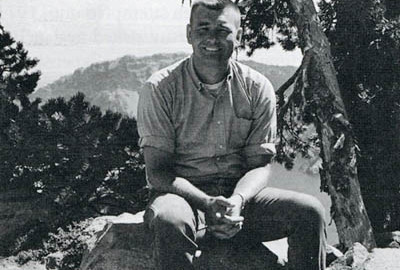Did that drive the funding?
Hills Creek Reservoir, which is on the Middle Fork of the Willamette, had a real problem with turbidity. They were logging the bejebbers out of the watershed and that area has a lot of very fine clay that would wash down into the reservoir. It had this turbidity problem and the Corps wanted to know why. They formed an interdisciplinary team and we published our findings at the end of that study. It appeared in 197 1, and was a 350 page report published by the OSU Water Resources Research Institute.
To back up just slightly, the article you published in 1972 about your dissertation, how did that come about?
That’s something else I was doing part time on my own, mainly in the evenings. After I graduated, I decided I would try to publish my doctoral thesis or portions of it. One thought I had was that no one had really published anything on [the limnology of] Crater Lake. I wrote a letter to an editor of the Journal of Limnology and Oceanography and asked if they would be interested in this topic. They said yes, so I submitted a paper and had it published (9). I felt pretty good about it because they only publish about 35 percent of the papers submitted. They certainly don’t publish descriptive papers like that anymore, pretty much experimental stuff.
I worked there (Hills Creek) until the summer of ’71, then took a job with the DEQ in Portland (10). I started there in October, 1971, and I worked at DEQ until 1974, when I was hired by the [U.S. Army] Corps of Engineers in Portland to write environmental impact statements.


